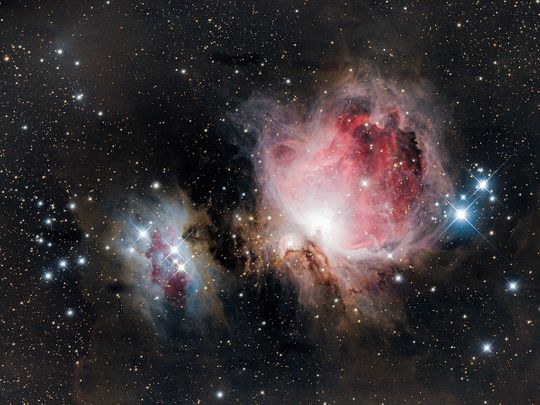
From Cygnus to Perseus to Sagittarius, there are 88 named constellations in the night sky. But how did they come to be?
Click start to play today’s ‘starry’ Spell It.
For thousands of years, humanity has been looking up at the same sky and the same twinkling stars. Those bright lights in the night have been revered as deities, used to mark changes in the seasons, and served as a guide for people navigating around the world.
According to a report in US-based space news website Space.com, some historians theorise that 17,000-year-old cave paintings in Lascaux, France, depict the constellations that we know today as Orion and Taurus. And the constellations that make up the Zodiac are incredibly old – they are the same today as they were when ancient Babylonian astronomers recorded them in the sixth century BC.
But ancient cultures saw different patterns when they looked at the stars. Some linked them to local legends, and others to flora and fauna. It was the Greeks, however, who made the most lasting impact on astronomy. Greek astronomer Claudius Ptolemy made an exhaustive list of 1,022 stars, and illustrated them as members of 48 constellations, using imagery from Greek myths and legends. His ancient text, called Almagest, became the basis of humanity’s understanding of the night sky.
Then, 800 years later, a Persian astronomer, Abdul Rahman Al Sufi, translated Ptolemy’s Greek text into Arabic, and brought stellar knowledge to a different part of the world. Al Sufi incorporated Arabic names, and labelled individual stars – something Ptolemy didn’t do. His observations were detailed and precise. So much so, that his ‘Book of Fixed Stars’ crossed over to Europe and his star names were accepted, along with Ptolemy’s constellations.
Today, we know there are countless stars and galaxies in the universe, and have scientific ways to deduce the mass, density and composition of stars from light-years away. But before modern science, people could only guess what these bright lights were.
One of the most famous examples is the interpretation of a group of stars that could be viewed as two completely different things. Officially called Scorpius, this constellation in the Zodiac has long been considered by the Polynesians to be an inverted fishhook, rather than a scorpion. They attribute it to a legendary deity named Maui, who possed a magical fishhook called Manaiakalani, which could catch anything. When he and his brothers went fishing one day, Maui cast his line in the sea. Tricking them into thinking he had caught an enormous fish, Maui made his brothers paddle the canoe as fast as they could, as he reeled in his line. What Maui caught however, was no fish – it was a group of islands from the sea, which humans could live on.
Legends like Maui’s tale can be found across cultures, from China to Egypt. No matter where you go, however, it’s evident that people have had a centuries-long fascination with the visible cosmos – a night sky that has become part of their own cultural lore.
Do you enjoy stargazing? Play today’s Spell It and tell us at games@gulfnews.com.








